UNIT 9 APES
1/67
Earn XP
Description and Tags
Name | Mastery | Learn | Test | Matching | Spaced |
|---|
No study sessions yet.
68 Terms
The Natural Greenhouse Effect
Warms the earth’s lower troposphere and surface.
We wouldn’t be here without it!
natural cooling process.
Large quantities of heat are absorbed by the evaporation of liquid surface water, and the water vapor molecules rise, condense to form droplets in clouds, and release their stored heat higher in the troposphere.
Greenhouse effect distribution picture
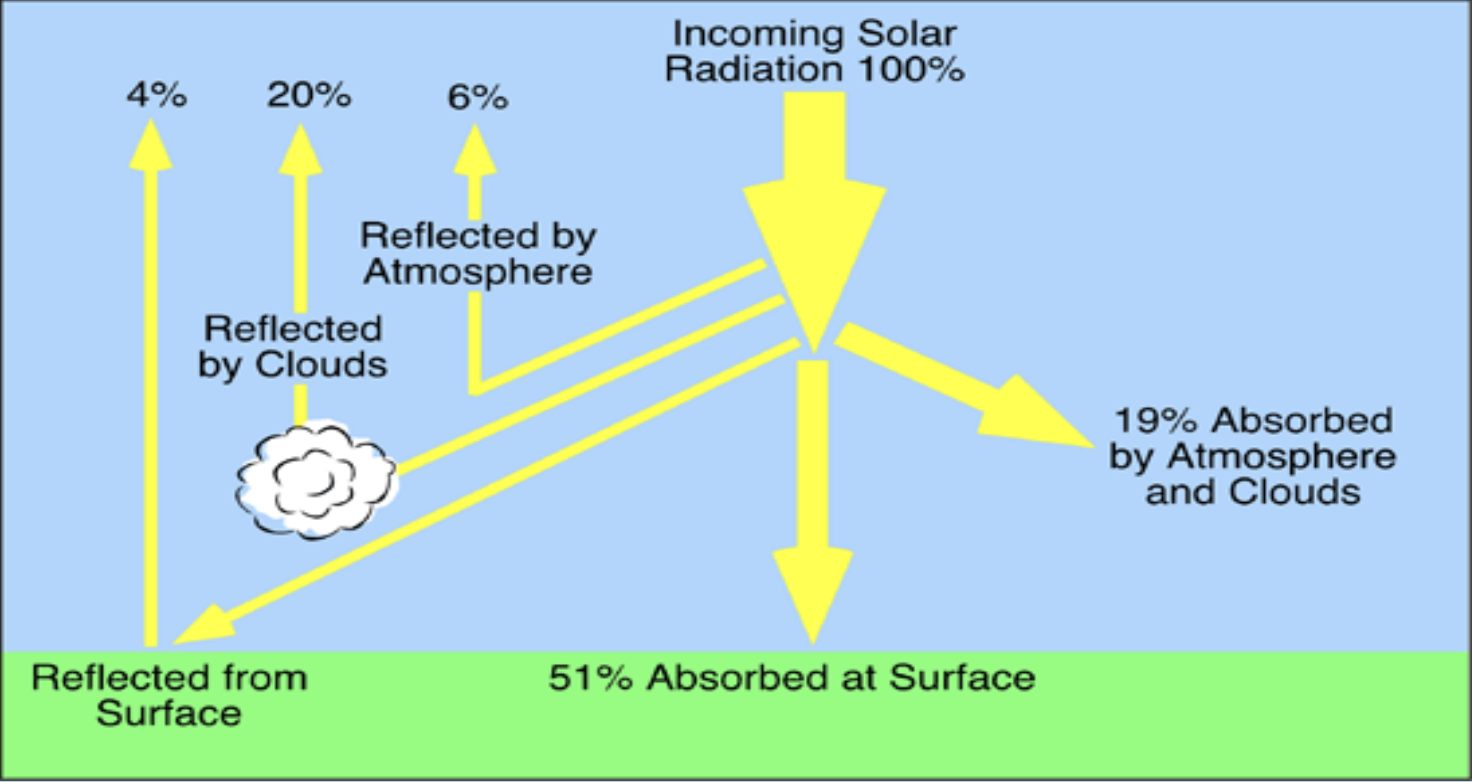
Major Greenhouse Gases
1. H2O
2. C02
3. CH4
4. N20
5. CFC’s
CFC’s are the only anthropogenic (meaning MAN MADE ONLY!) GH gas
carbon dioxide emmisions
33% transportation
31% electricity
16% industry
12% residential and commercial
8% other (non fossil fuel combustion)

methane emissions
32% natural gas and petroleum systems
27% enteric fermentation
17% landfills
9% manure management
6% coal mining
9% other
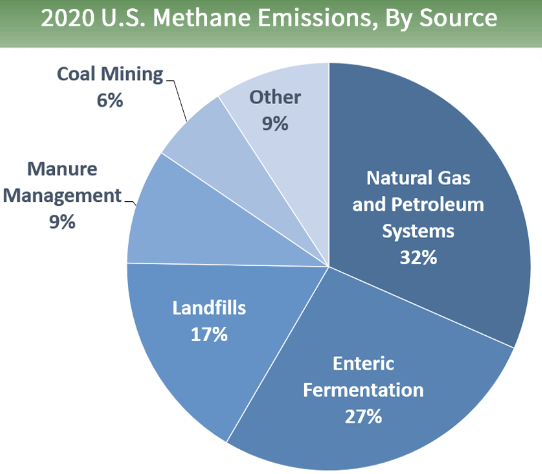
nitrous oxide emissions
74% agricultural soil management
6% wastewater treatment
5% stationary combustion
5% chemical production
5% manure management
4% transportation
1% other
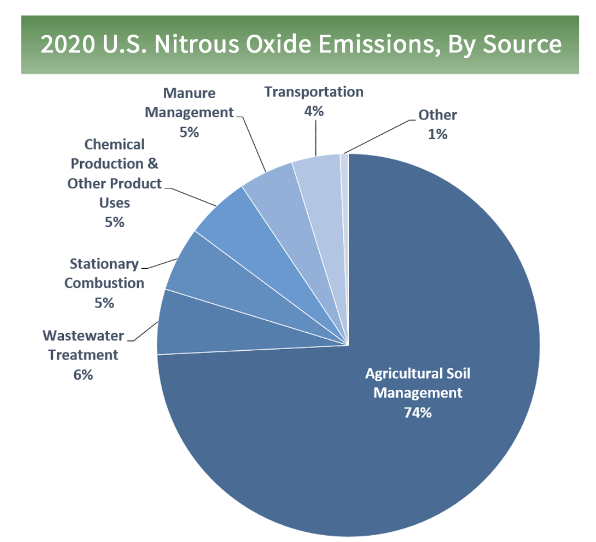
good vs bad ozone picture
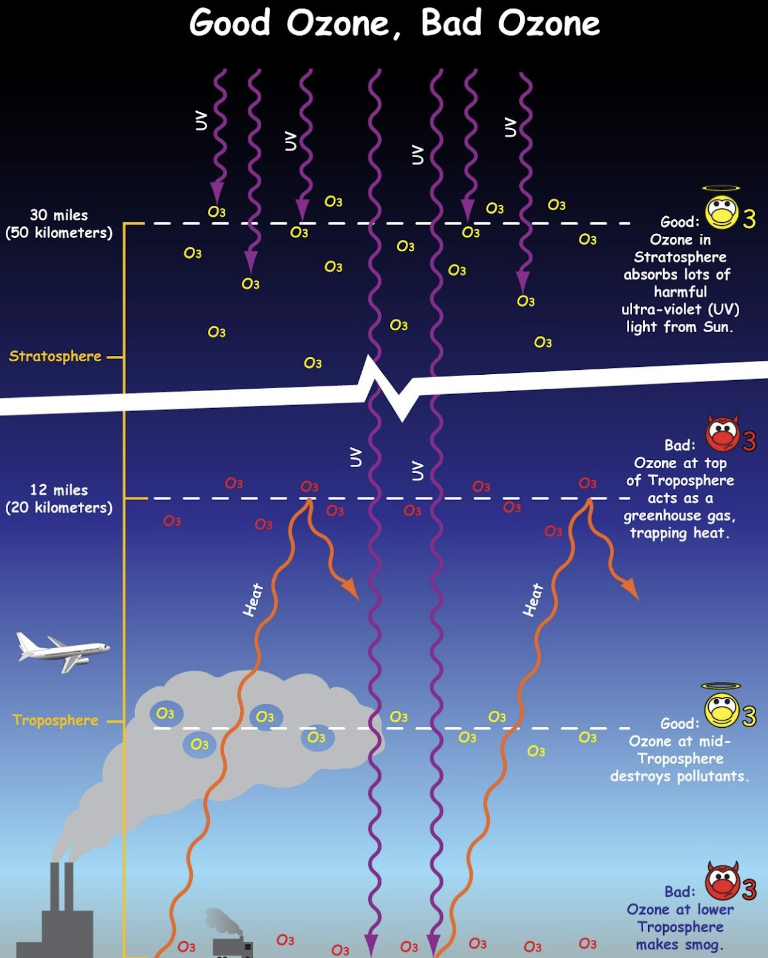
overview of US greenhouse gas emissions in 2020
79% carbon dioxide
11% methane
7% nitrous oxide
3% fluorinated gases
sources of US greenhouse gas emissions in 2020
27% transportation
25% electricity
24% industry
13% commercial and residential
11% agriculture
Carbon dioxide (CO2)
human sources:
Fossil fuel burning, especially coal (70–75%), deforestation, and plant burning
Methane (CH4)
human sources:
Rice paddies, guts of cattle and termites, landfills, coal production, coal seams, and natural gas leaks from oil and gas production and pipelines
Nitrous oxide (N2O)
human sources:
Fossil fuel burning, fertilizers, livestock wastes, and nylon production
Chlorofluorocarbons (CFCs)*
human sources:
Air conditioners, refrigerators, plastic foams
ONLY one that gets to the stratosphere
Hydrochloro-fluorocarbons (HCFCs)
human sources:
Air conditioners, refrigerators, plastic foams
Hydrofluorocarbons (HFCs)
human sources:
Air conditioners, refrigerators, plastic foams
Halons
human sources:
Fire extinguishers
Carbon tetrachloride
human sources:
Cleaning solvent
water vapor
most abundant GHG
spends a short amount of time in the atmosphere
isn’t a major contributor to climate change
Prehistoric Climate Change
The ONLY trend is that our climate is not fixed…that means that changes in our climate are normal.
Over the past 900,000 years the troposphere has undergone global cooling and global warming.
These alternating cycles are called glacial and interglacial periods (Milankovitch Cycles).
Severity of glacial and interglacial periods depends on the tilt of the earth and the Earth’s distance from the Sun
climatic temperature trends on Earth
CO2 levels rise, so do temperature and sea levels
CO2 levels have risen far faster in the last 200+ years that at any other point in Earth’s geological history
At the time of the industrial revolution,CO2 concentration was ~288 ppm. This means that since the Industrial Revolution, CO 2 levels have risen by ~48%.
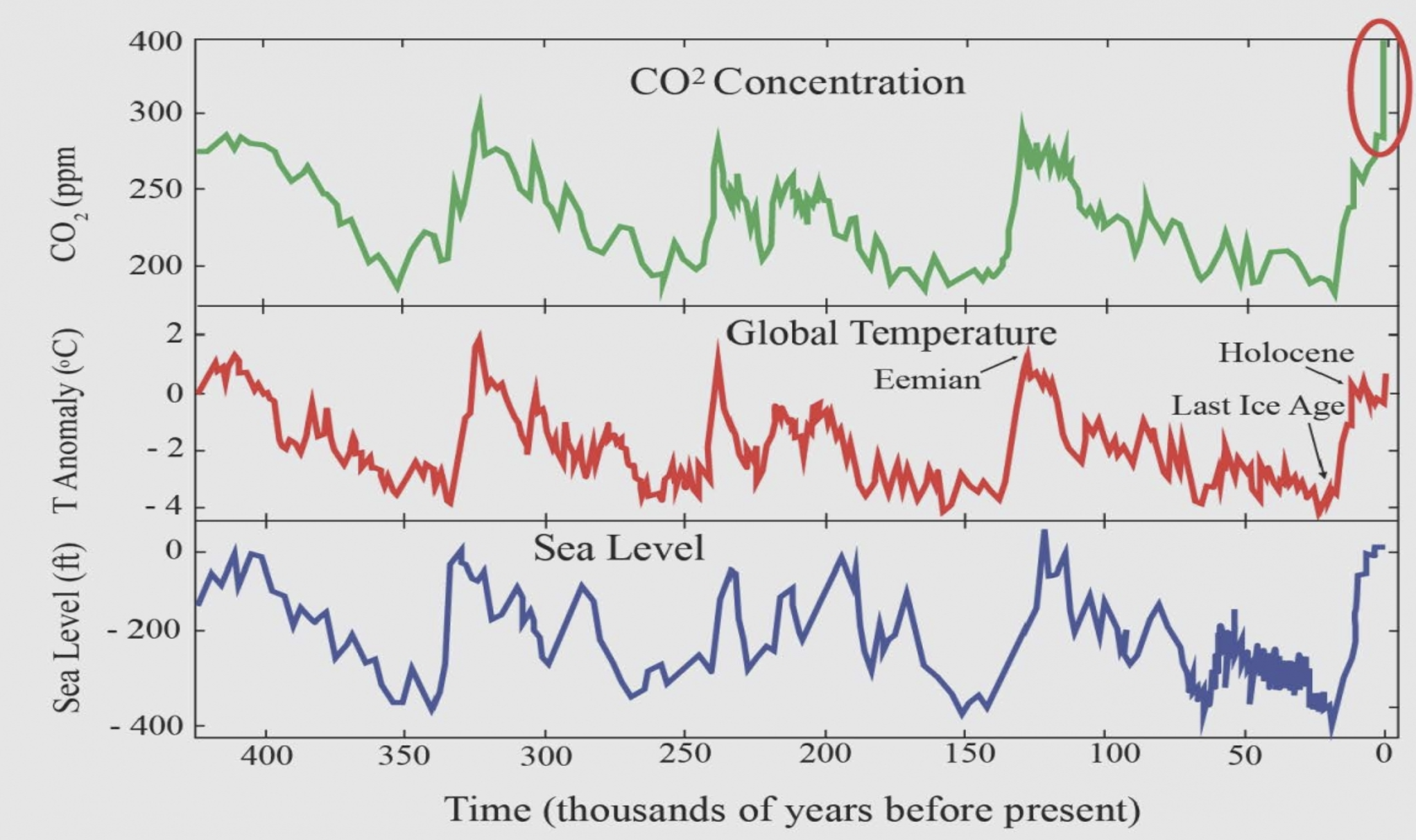
Prehistoric Climate Forensics
analyze air bubbles trapped in ice cores, and ocean/lake sediment cores to uncover information about past:
temperature trends
greenhouse gas concentrations
snowfall
forest fire frequency
Analyze calcium carbonate foraminifera exoskeletons
Carbon used for determine age
Oxygen used to determine temperature
Other tropospheric temperature mediators
Clouds can have a warming effect and a cooling effect.
Warming: clouds absorb and release heat into the troposphere
Cooling: by reflecting more sunlight back into space
Particulates (ash, sand, dust)
Can increase cloud cover (can be natural or man made).
Some have a high albedo and reflect more incoming sunlight back into space during the day.
Will keep day time temps COOLER as sunlight reflected out
BUT nights become warmer because heat cannot be radiated back into space.
albedo
how much sun something reflects
-white has a higher albedo than black surfaces
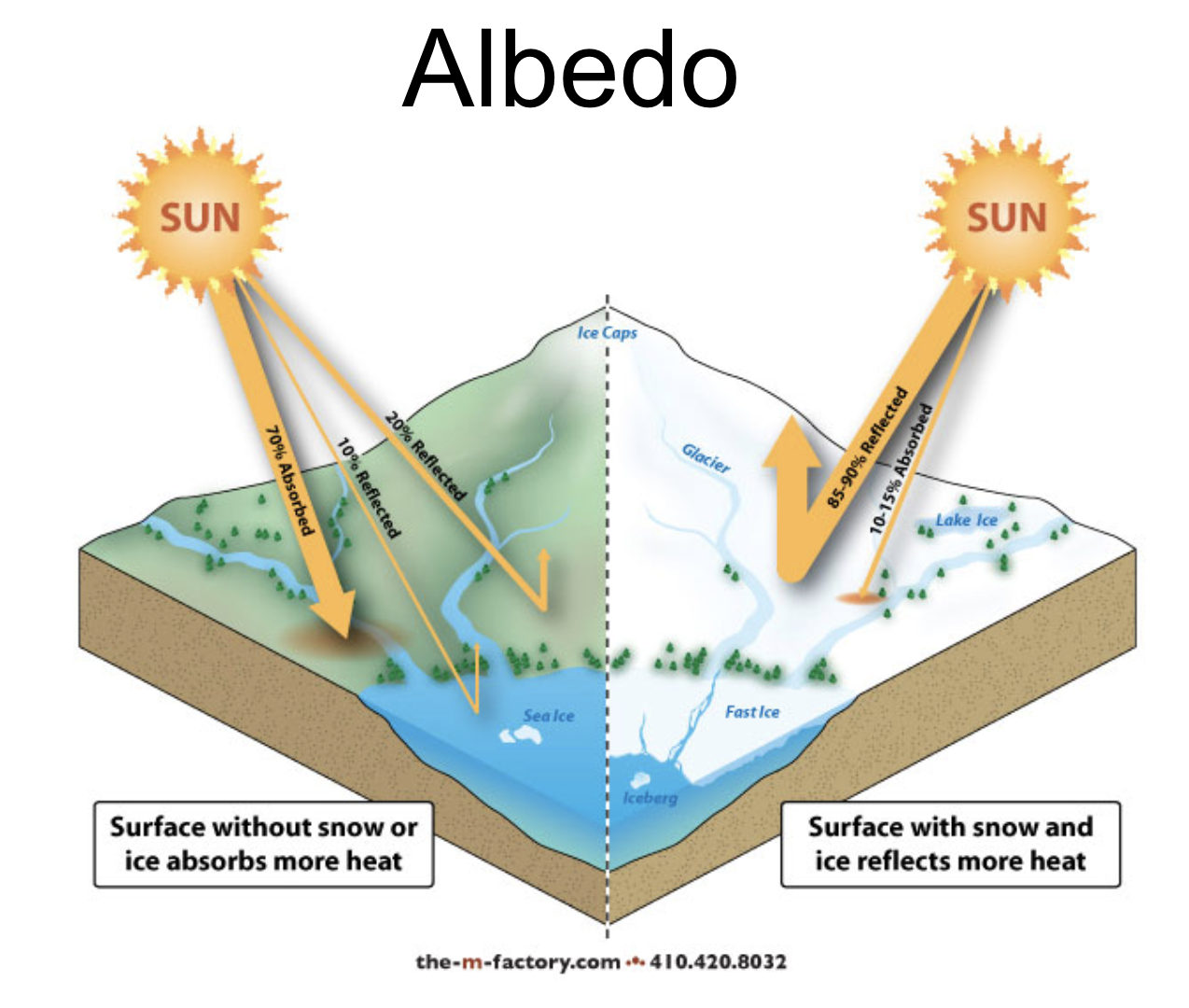
positive feedback loops
As temperatures increase, sea ice continues to melt, causing a decrease in albedo
As albedo decreases, temperatures rise even more, causing more sea ice to melt, and so on
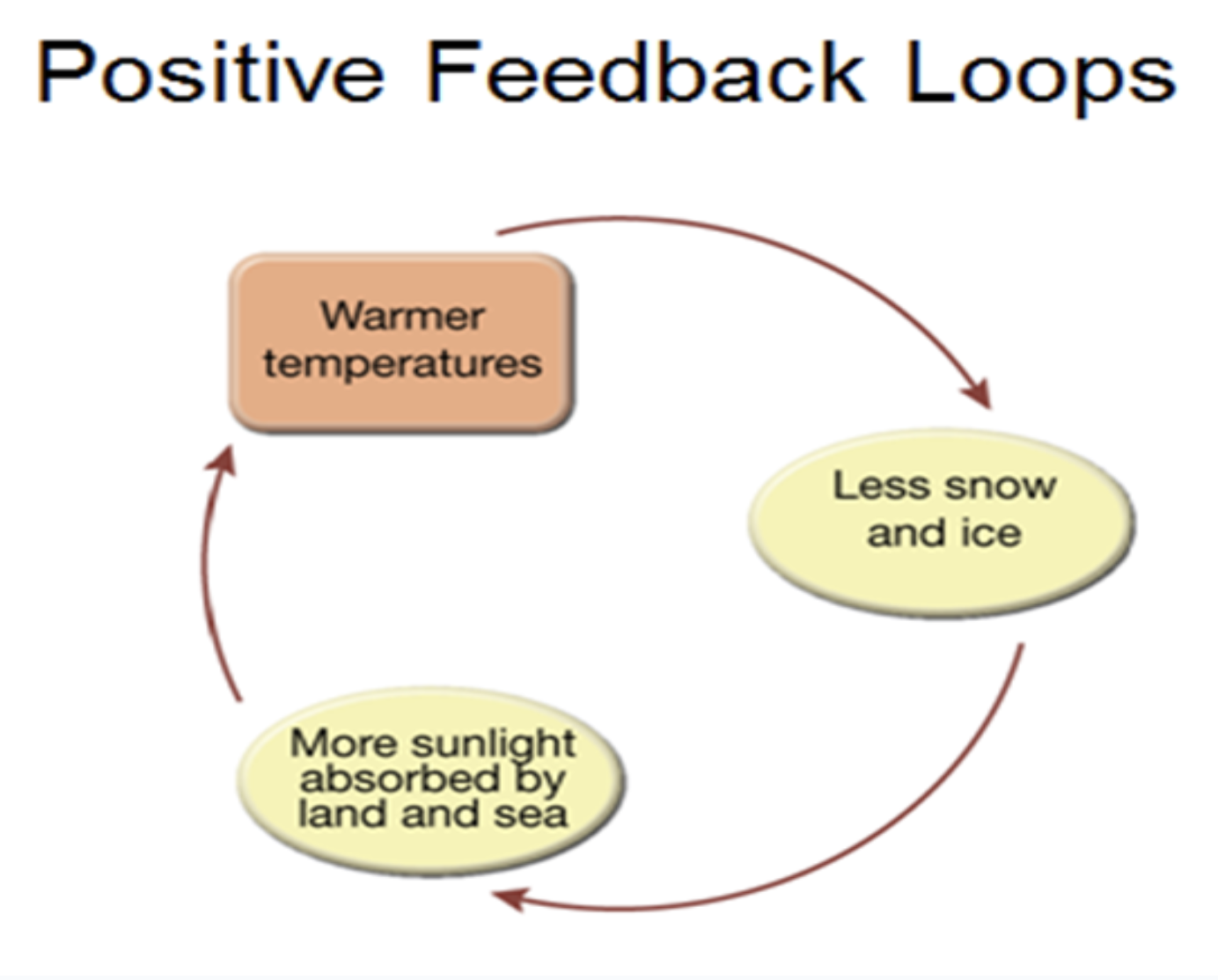
Sea Level Increase
Can be positive- newly created habitats on flooded continental shelves
Can be negative- deeper communities may no longer have adequate access to sunlight for photosynthesis
Greatest amount, however, will come from thermal expansion (water increases in volume at higher temperatures)
More air pollution-related deaths
With warmer temps, we can expect to see a rising level of photochemical smog formation and more poor air quality days
lead to a further increase in the number of respiratory condition cases and premature deaths
by 2100, we could see an extra 200,000 deaths globally due to worsening air pollution.
Melting Permafrost
The permafrost is a major reservoir of methane (remember the methane hydrates we discussed in Unit 6?)
As the permafrost thaws, methane is released into the atmosphere
The methane absorbs heat, which in turns warms the tundra more, leading to more permafrost thawing.
ocean acidification
The decline in ocean pH due to an increase in CO2 diffusion into the oceans
This increased diffusion is due to increasing CO2 levels in the atmosphere and is happening DESPITE ocean temperatures increasing
if TOO much CO2 is absorbed…
Than the ocean will experience a decrease in pH as more carbonic acid is made.
H2O + CO2 —> H2CO3 (carbonic acid formation)
Carbonic acid easily dissociates into ions (weak acid)
H2CO3 —> H+ + HCO3- (most common)
Acidic water can eat away at the calcium carbonate shells of organisms and coral reefs…
CaCO3 + 2H+ —> Ca2+ + H2CO3
coral bleeching
Corals have a mutualistic relationship with zooxanthellae, a type of algae
The zooxanthellae provide nutrients to the coral, and the coral provide a habitat for the zooxanthellae
When the coral get stressed, they eject the zooxanthellae. While some corals are able to recover, many do not.

Stresses linked to bleaching events
Warmer/colder than normal water temps
Nutrient pollution from runoff
Overfishing
Tourism industry
Changes in salinity
Dredging turbidity
ocean acidification has ZERO to do with coral bleaching
why we need coral reefs
Corals are home to more than 25% of all marine life, provide protection of the shoreline from storm surges and from excessive erosion, are habitat for fish that humans consume, provide a source for ecotourism money, and are potential sources of medicine for various ailments
Ocean and Wind Currents
Gulf stream currents play a large part in helping to moderate surface temps.
No gulf stream= Europe and NE US covered with glaciers.
Wind current help transport heat throughout the Earth.
Climate change could potentially disrupt these convection currents as well as the jet stream.
How Can We Reduce the Threat of Global Warming
Improve energy efficiency to reduce FF use
Shift from carbon based fuel to a mix of carbon free
Store as much C02 as possible
Plant more trees
Soil sequestration
Inject into deep ocean
Pump it deep into ground into unmineable coal seams
Kyoto protocol
Require 39 developed countries to cut emissions of C02, CH4 and N20
Does not require poorer developing countries to make any cuts
The US withdrew its participation in 2001
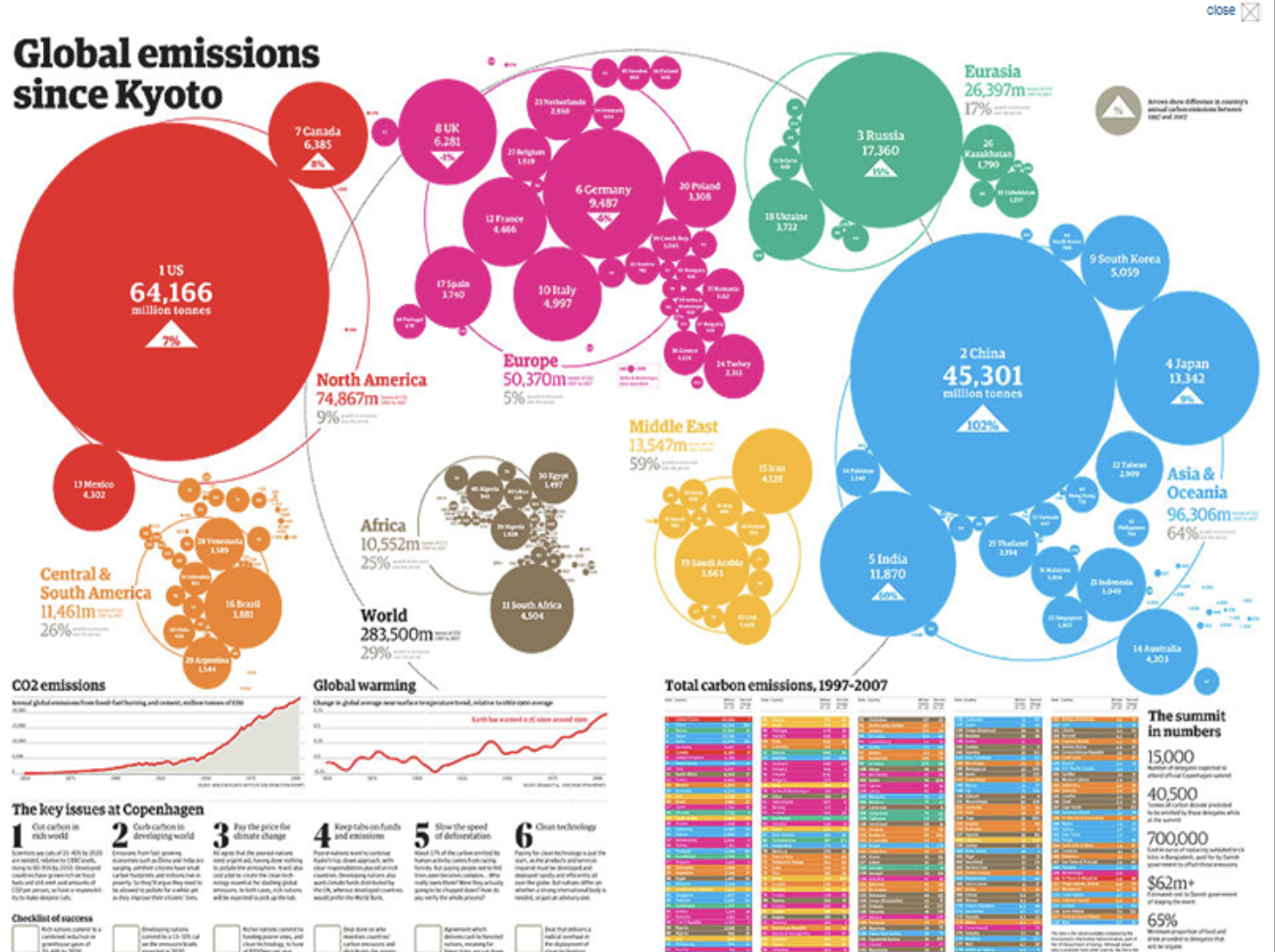
2015 Paris Climate Change Treaty
Kyoto Protocol, take 2
Will be a legally binding document to limit greenhouse gas emission… or not
Pledge may be better term
The rapid growth of China = more carbon emissions.
But these emissions caused by Western countries outsourcing their operations to China
should the country of the producer or the consumer be penalized?
future of global warming
CO2 regulation in US…it’s coming
New power plants will be given a strict limit of CO2 emissions
Will have to invest in cleaner burning fuels or carbon capture & storage
Using the Marketplace to Reduce/Prevent GH Emissions
GH gas emissions trading program
Industries & companies earn GH gas emission credits by improving energy efficiency, switching from coal to natural gas and adopting certain farming ranching and soil building and conservation practices.
Sequestering Carbon—3 steps
Capture CO2 from power plants or industrial processes
Compress & transport CO2 (usually in pipelines).
Underground injection and geologic sequestration of the CO2 into deep underground rock formations.
Mile below
In porous rock with impermeable, non porous cap
Potential Sequestration Sites
Potential sites can include depleted oil/gas reserves, saline formations, and unmineable coal seams
We do not have a lack or storage sites. The problem, however, is that retrofitting coal-burning power plants with carbon sequestions technology is currently cost-prohibitive in many areas
carbon capture and storage on only seen in the small-scale for now.
Trends of Ozone Due to Human Activities
Ozone is the Earth’s sunscreen. It filters out UV which allows life to exist and protects us from sunburn, skin & eye cancer.
If there is a decrease the beneficial ozone in the stratosphere then there is an increase the harmful ozone in the troposphere
called photochemical smog
Ozone Depletion in the Stratosphere
Ozone layer in the stratosphere keeps about 95% of UV radiation from reaching the surface of the Earth.
A hole (ok, really THINNING) has developed in the ozone layer as a result of CFC use.
CFC’s
thought to be “dream” chemical
inexpensive to produce
used as coolants, propellants, cleaners, fumigants and bubbles in plastic foam.
problem with CFC’s
CFC’s remain in the troposphere because they are insoluble in water and chemically unreactive.
These chemicals are lifted into the stratosphere by drift convection and mixing of air.
Once CFC’s reach the stratosphere they break down into highly reactive Cl, Br and I atoms which accelerate the breakdown of ozone.
Each CFC molecule can last for 65-385 years in the stratosphere.
chlorine atom
A single chlorine atom removes about 100,000 ozone molecules
Montreal Protocol
phase out of substances responsible for ozone depletion, starting in 1989

Harmful effects of UV radiation
Skin cancer (ultraviolet radiation can destroy acids in DNA)
Cataracts and sun burning
Suppression of immune systems
Adverse impact on crops and animals
Reduction in the growth of ocean phytoplankton
Degradation of paints and plastic material
Cancer are You Most Likely to Get from UV
Even one severe sunburn doubles you chance of getting squamous or basal cell skin cancers.
Malignant melanoma-spreads to other organs
3 or more blistering sunburns …
before age 20 ….
5 times more likely to develop
malignant melanoma
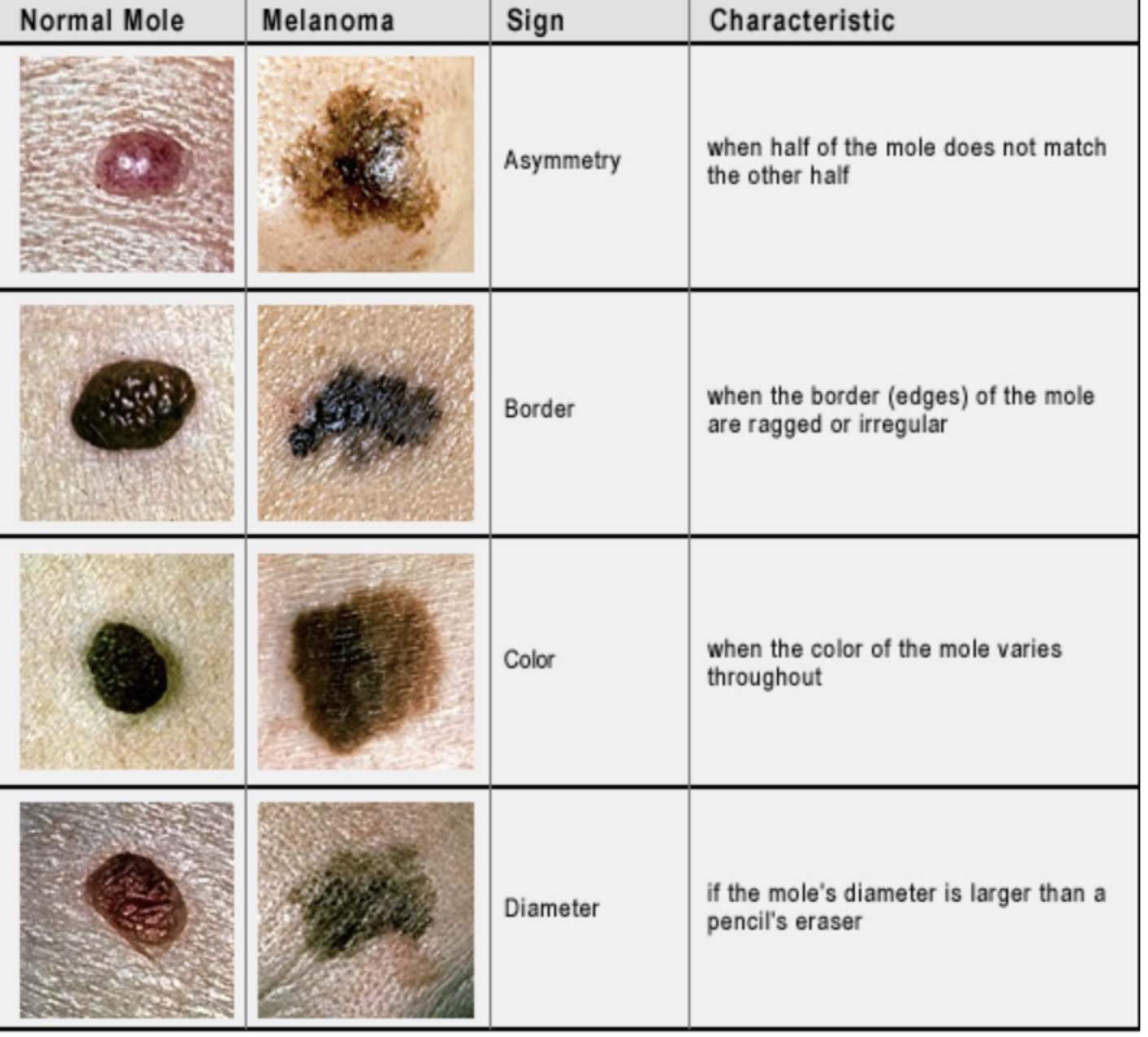
Extinction
The ultimate fate of all species just as death is for all individual organisms
Species tend to exist for 1-10 million years
99.9% of all the species that have ever existed are now extinct
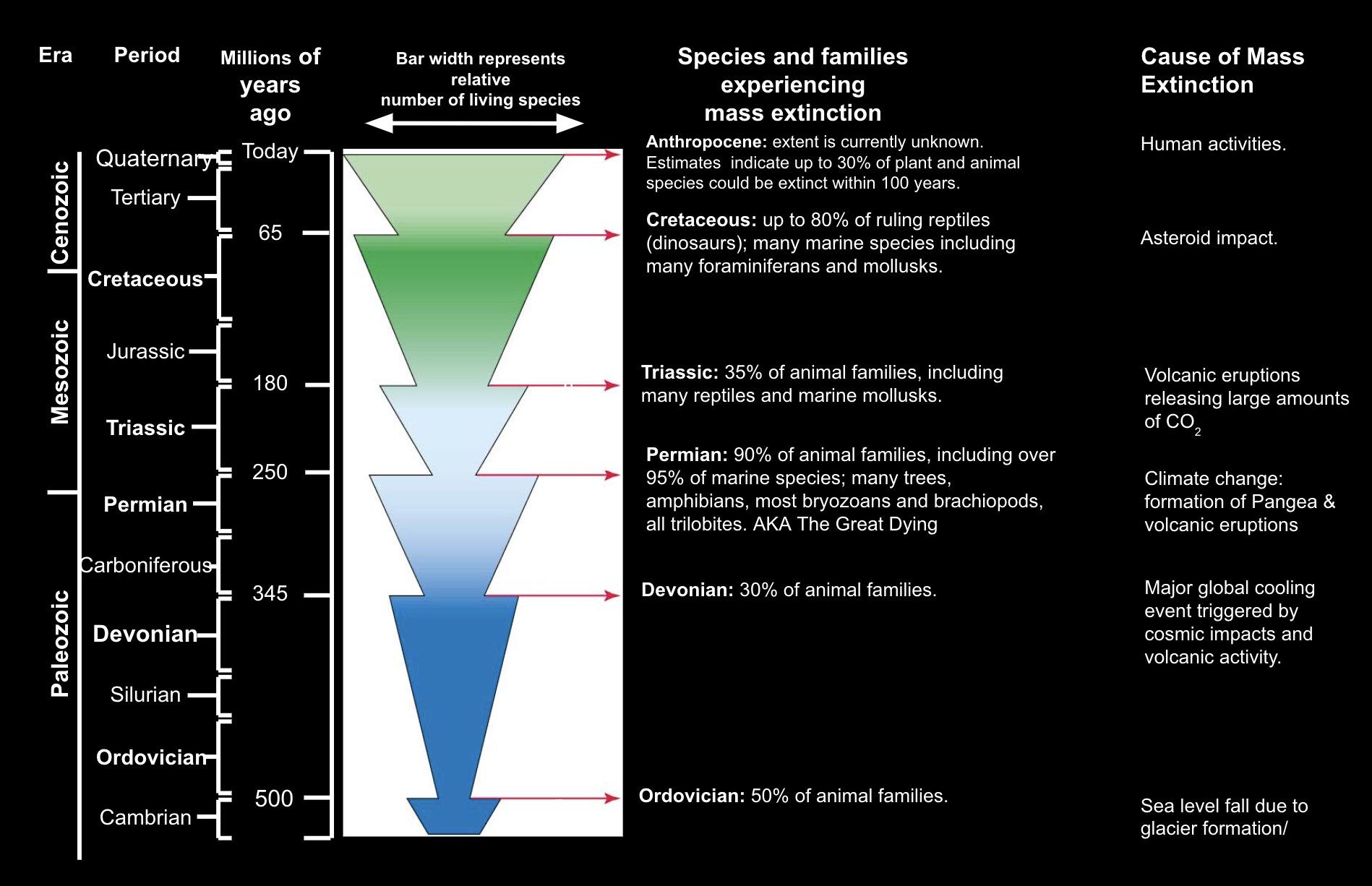
Local extinction
when a species is no longer found in an area it once inhabited, but is still found elsewhere in the world.
Many crocodilian species have experienced localized extinction, particularly the saltwater crocodile (Crocodylus porosus) which has been extirpated from Vietnam, Thailand, Java, and many other areas.
Ecological extinction
occurs when so few members of a species are left that it can no longer play its ecological roles in the biological community.
Size structures and densities of sea urchins are correlated with the presence of sea otter populations, and because they are the principal prey of this keystone predator, the sea otters were most likely the main determinants of the differences in sea urchin populations. With high sea otter densities the kelp consumption by sea urchins in these kelp forest was severely limited, and this made competition between algal species the main determinant in survival. However, when sea otters were absent, kelp consumption by the sea urchins was greatly intensified to the point of decimation of the kelp forest community.
Biological extinction
when a species is no longer found anywhere on earth…this is FOREVER!
Père David's Deer, Elaphurus davidianus extinct in wild since at least 1865
Scimitar Oryx Oryx dammah extinct in wild since at least 1865
Caribbean Monk Seal Monachus Tropicalis
Extinct since 2008 (officially)
Endangered species
has so few individual survivors that the species could soon become extinct across all or most of its natural range.
Threatened species
still abundant in its natural range but because of declining numbers is likely to become endangered in the near future.
Characteristics of Species Prone to Ecological and Biological Extinction
Low reproductive rate
Blue Whale, Panda
Specialized niche
Panda, Birds of Paradise
Narrow distribution
Island Spp., Elephant seal
Feeds at high trophic level
Asian Lion, Polar bear
Anthropogenic Causes for Extinction: HIPPCO
Habitat Fragmentation
Invasive Species
Population growth
Pollution
Climate Change
Overexploitation
Poaching
Overhunting/overharvesting
Anthropogenic Causes for Extinction:Habitat Fragmentation
Loss of habitat leads to a loss of specialists, which, in turn, leads to a loss of generalists. Loss of habitats also leads to decreases in species that have large territorial requirements.
The effect of habitat fragmentation has varies from species to species in an environment
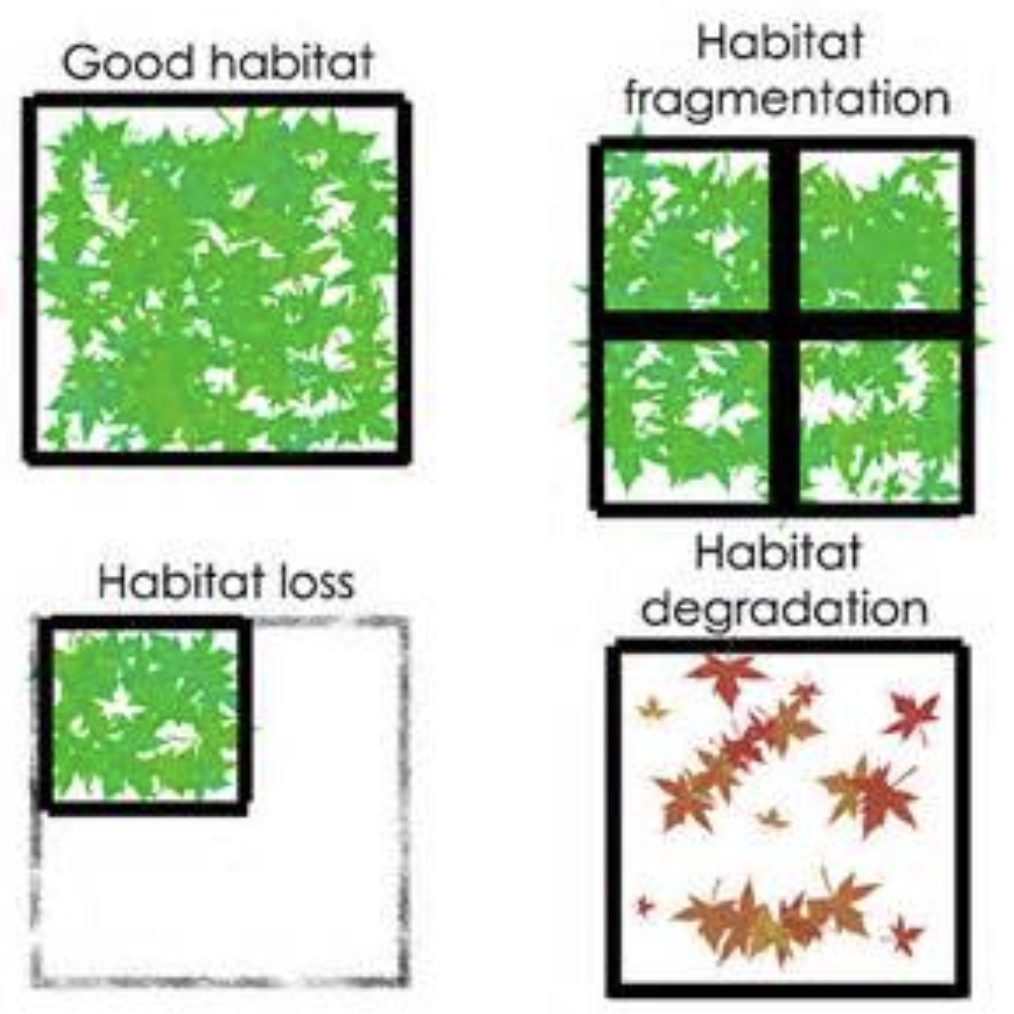
Anthropogenic Causes for Extinction:Invasive Species
Tend to be r-selected species. Can outcompete native species, driving down their populations.
Also known as aliens, invasive, exotic, transplant, introduced and non-indigenous
evolve somewhere are deliberately or accidentally introduced into a community.
Can threaten the long-term survival of specialists
Zebra Mussel
Arrived from Europe, introduced into Great Lakes by BALLAST WATER
Reproduces rapidly
Has no natural enemies
Displaced natural mussel species
Rapidly taking over waterways in US
Clogs pipes
NOW IN TEXAS
How are alien species able to take over an ecosystem?
as in r selected species. Most successful alien species are r selected
One way to control an alien/invasive species is to introduce another non native species to control it (bring in it’s predator maybe)… Good/Bad?
example of controling an alien/invasive species
To control purple loosestrife, introduced insects that ate its leaves
Introduced ladybugs to control populations of invasive insects.
Parasitic wasps or fungus to control fire ant populations
Bacteria to control animal or insect pests---like Bt.
Reducing Threats from Invasive Species
inspect imported goods that are likely to contain invader species
identify major harmful invader species and pass international laws banning their transfer from one country to another.
Population Growth
Increased urbanization puts humans in direct competition with animal species.
Pollution
Pollution decreases the quality of the air, soil, and water.
Climate Change
Causes habitat loss via changes in temperature, precipitation, and sea level rise
Extinction Threats from Poaching and Hunting
Smuggling wildlife is the third largest and most lucrative illegal cross border smuggling activity after weapons and drugs
Poverty
Poor people struggling to survive in areas with rich wildlife kill or trap species to make enough money to survive and fee their families.
Poaching
Live mountain gorillas- $150,000
Rhinoceros horn- $28,600/kg
Bengal tiger fur -$100,000
Poaching has led to the extinction of several subspecies of rhino. The rhino are killed solely for the ivory in their horns.
International treaties
reduced the international trade of endangered and threatened species, but enforcement is difficult.
1975 Convention on International Trade in Endangered Species (CITES)
Lists 900 species near extinction that cannot be commercially traded as live specimens & 29,000 other threatened species that are restricted.
Convention on Biological Diversity (CBD)
three main goals: the conservation of biological diversity, the sustainable use of its components, and the fair and equitable sharing of benefits arising from genetic resources
National laws
Lacey Act of 1900 prohibits transporting live or dead wild animals across state borders without a federal permit.
Endangered Species Act of 1973 (ESA) identified and legally protected endangered species in the US and abroad.
Most far reaching and controversial environmental laws passed
Protecting Wild Species
Habitat Corridors
Habitat corridors allow for populations of animals to be able to access areas of habitat which they would otherwise be cut off from due to habitat fragmentation.
Sustainable Resource Use
Ex- sustainable forestry: replanting cut down trees, reusing wood, IPM to prevent spread of disease, removal of diseased trees, prescribed burns to reduce natural forest fires